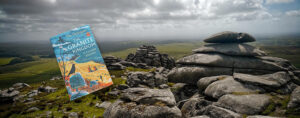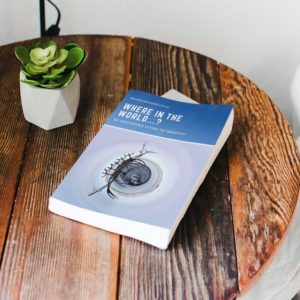Cold feet in 34°C temperatures
The plan was to paddle a canoe up Katherine Gorge but I had spent too long in the Top End and visited too many wetlands, billabongs and rivers. I was beginning to get cold feet. Every major body of water I came across had signs warning of the danger of crocodiles, in particular the “saltie” or saltwater croc, whose reputation is fearsome.
Territorians say: “When there are warning signs about croc danger, do not get in the water; when there are no warning signs, you still do not get in the water. If there are signs saying it is safe then, and only then, do you get in the water”
There are swimming holes in both Litchfield and Kakadu National Parks where each dry season the crocs are relocated to make it safe for swimming. Katherine Gorge, I hoped, had a similar policy.
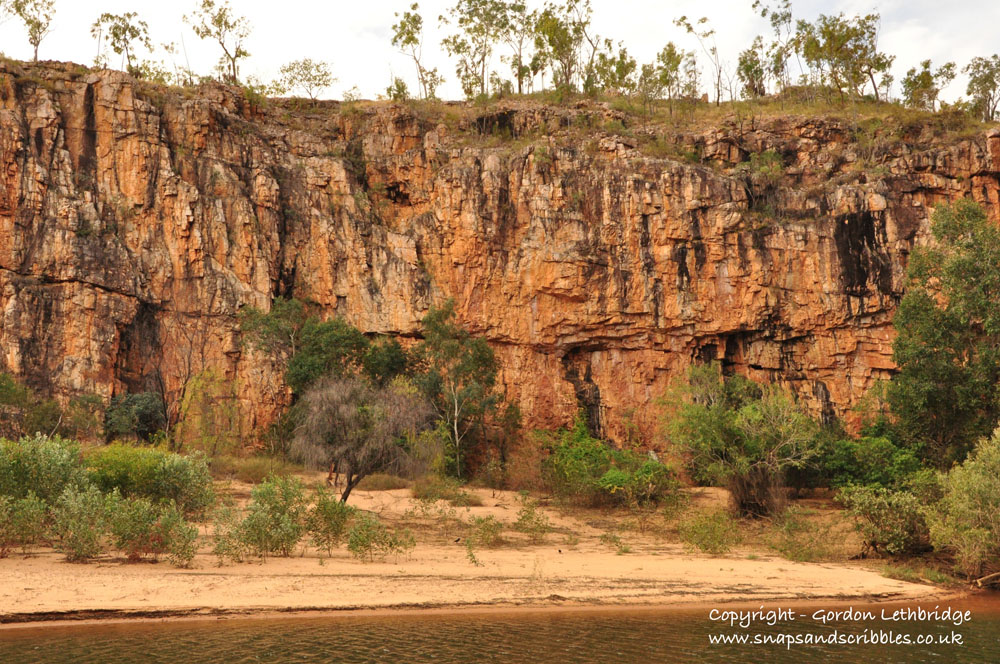
Sensational headlines in the local newspaper didn’t help either; especially the one that screamed out “5 metre croc goes missing”. How can you not know where a 5 metre crocodile is? Earlier I had seen the power and size of these natural killing machines up close. I was beginning to wish I hadn’t.
Nitmiluk National Park
We drove south from Darwin wondering what the gorge would hold for us. Would we encounter any crocodiles? Katherine Gorge is in the Nitmiluk National Park east of the town of Katherine and is the centrepiece of the park.
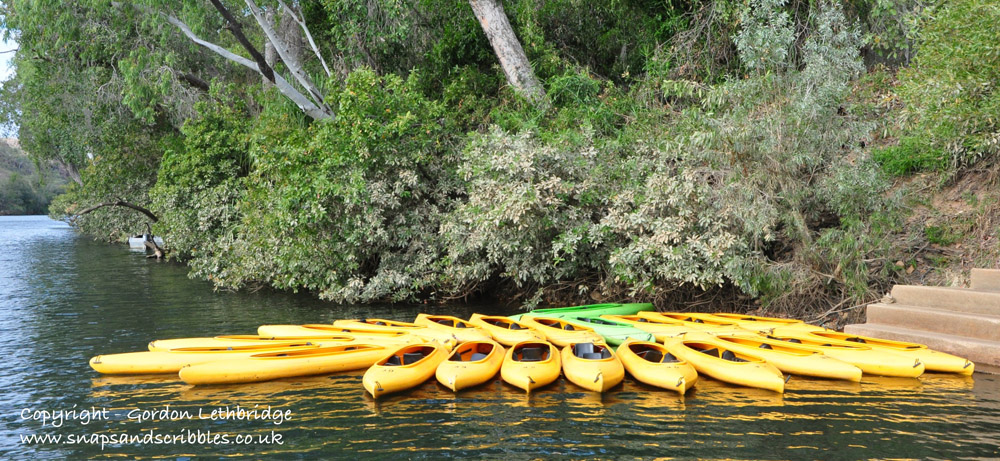
At the lodge we were assured that the gorge was free of the saltwater crocodiles but the shier and smaller freshwater crocs could still be seen and in fact bred in the gorge. Apparently the gorge is patrolled at the end of the rainy season as water levels drop and the larger saltwater crocs are trapped. These are relocated. Traps are set and baited to catch the more elusive ones. Red floats are tied to trees. These are irresistible to the crocs, thinking it is food, grab them. Katherine Gorge is not opened to visitors until 28 days have passed without any teeth marks appearing on the floats.
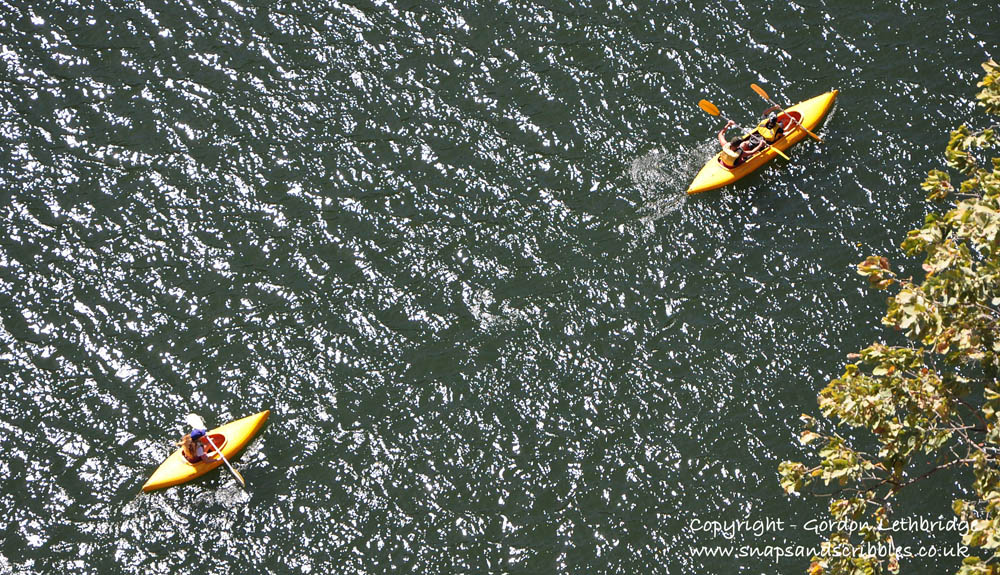
My confidence was definitely returning and I was looking forward to the early start the following morning.
As we made our way to the canoe station the sun was already generating more heat than we normally experience on the South Coast of England. All the formalities completed it was explained that the gorge was divided into sections by a series of small cataracts. These were not passable in a canoe. When you reached the impasse you left the canoe safely on the beach, and taking all your kit walk upstream where there are another set of canoes. Take one and continue your journey we were told. A return trip up the first two sections is easily done in a day. Anymore and you will need to camp out.
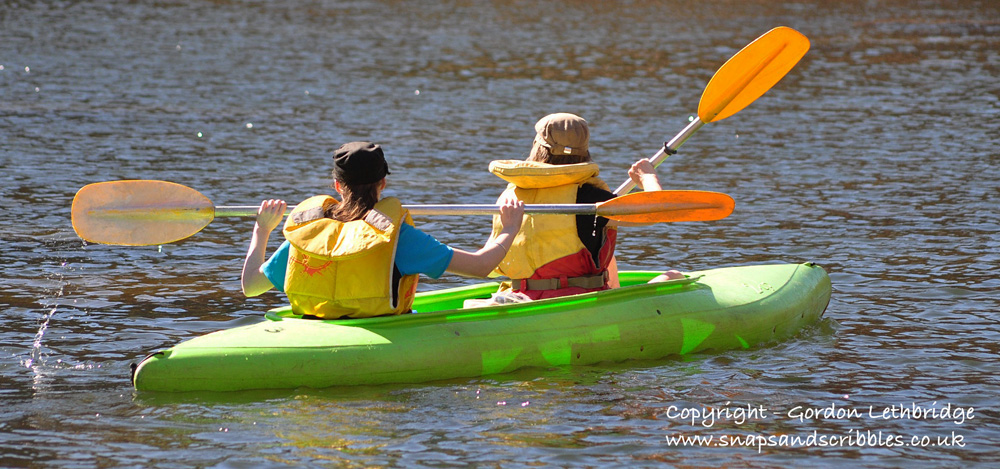
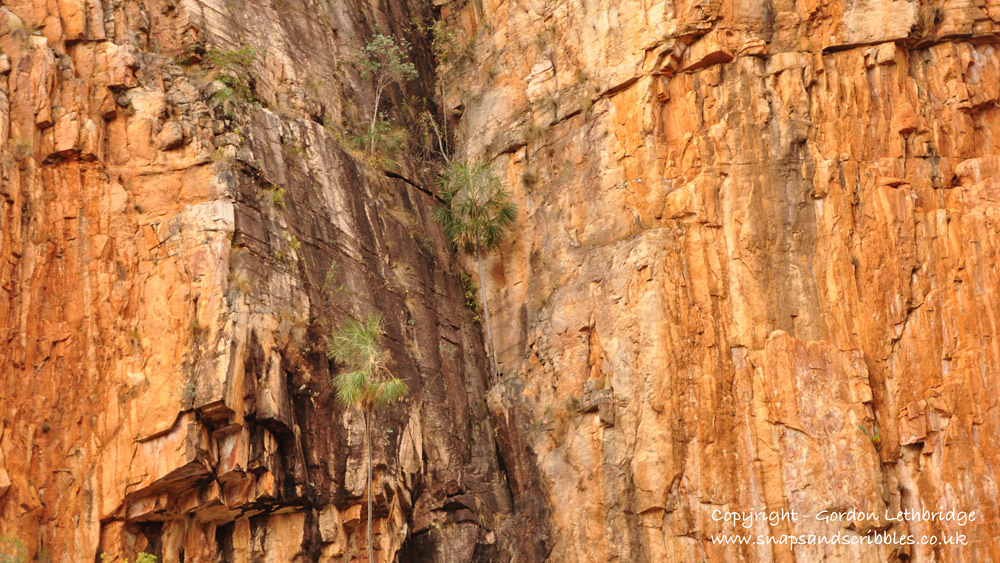
We slipped into the double canoe, buckled the life jackets, slapped on the factor 30 and stowed the cameras in waterproof containers. Gently paddling upstream we soon entered the mouth of Katherine Gorge with its towering russet cliffs.
Off to the left we saw a red float. All assurances aside I wanted to check for myself. It was in pristine condition; no teeth marks. I breathed a big sigh of relief.
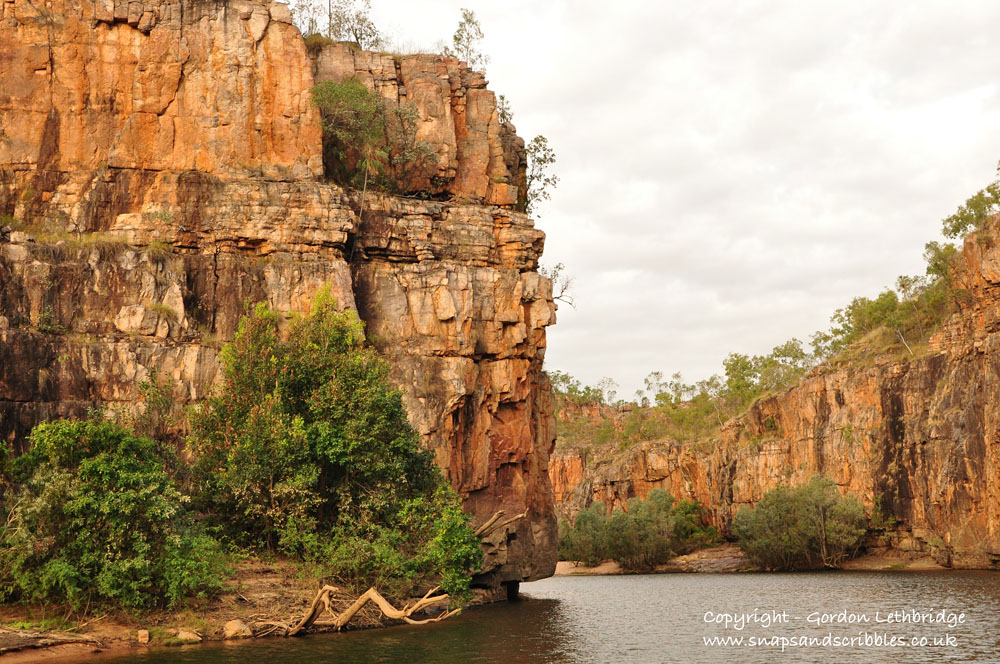
The sandstone walls closed in and towered above us as our paddles dipped rhythmically in the water. We hardly spoke, not wanting to disturb the peace of the morning. Wildlife, birds in particular, ignored the canoe and us. We did not present a threat despite the fact we hardly blended in with our bright yellow canoe. We spent ten minutes watching a white-faced heron fishing before once more paddling upstream.
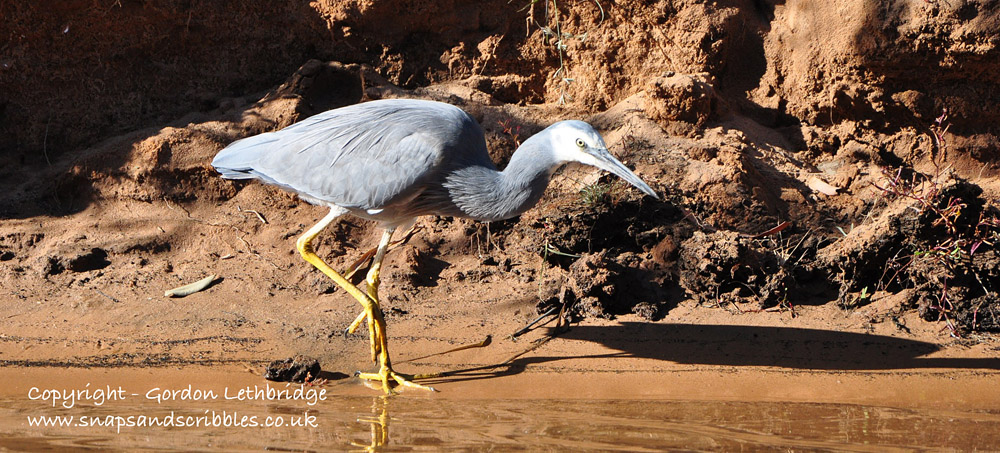
On the way we passed an area sacred to the Aboriginal people whose land the park is on. The government has handed the land back and the Aboriginal people operate the park. We had been asked to kindly respect the area and not paddle through it.
The sun was bouncing off the walls and heating up the air inside the gorge. We found a small patch of shade under an overhang that brought some relief from the heat and took some photographs of the bronze and burnt gold of the cliffs. They constantly changed colour as the sun’s angle changed.
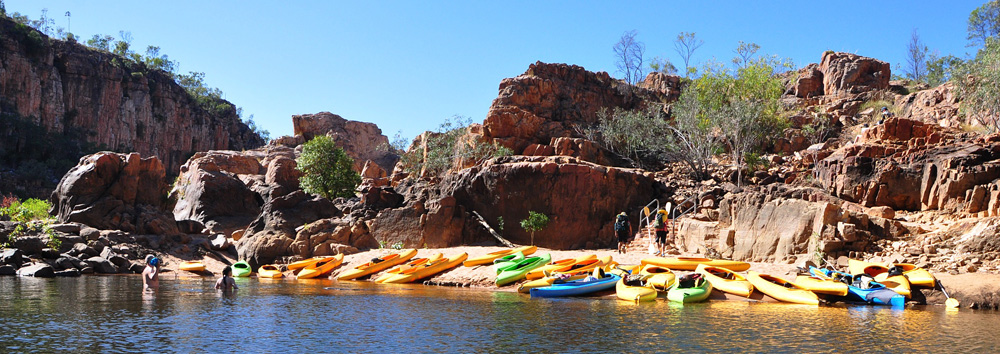
After a couple of hours paddling we reached the first non-navigable section. The first of the tour boats chugged up and pulled in to the left bank. The canoeists have their own beach on the right bank which means that we could avoid the tourists on the other side.
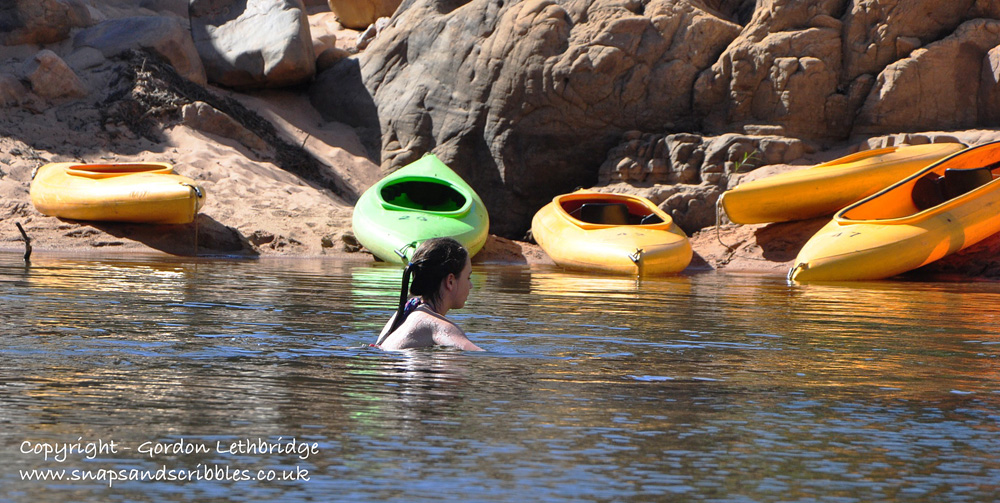
Walking about 500m through the scrub we came across another small beach with another group of canoes. It was just a matter of choosing one and heading off up the second section of Katherine Gorge.
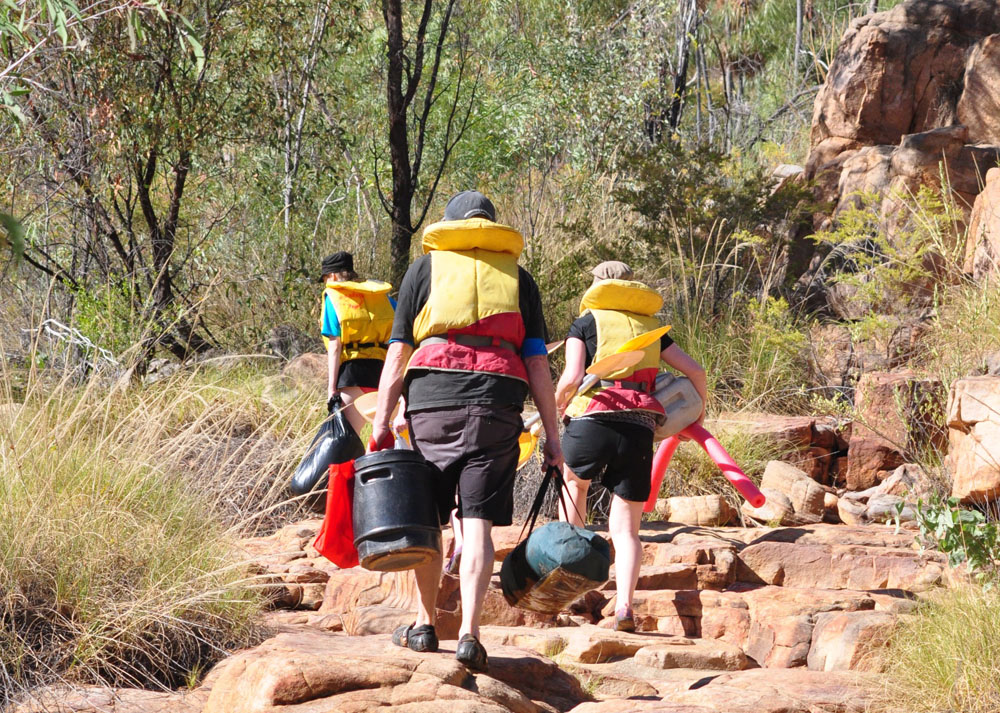
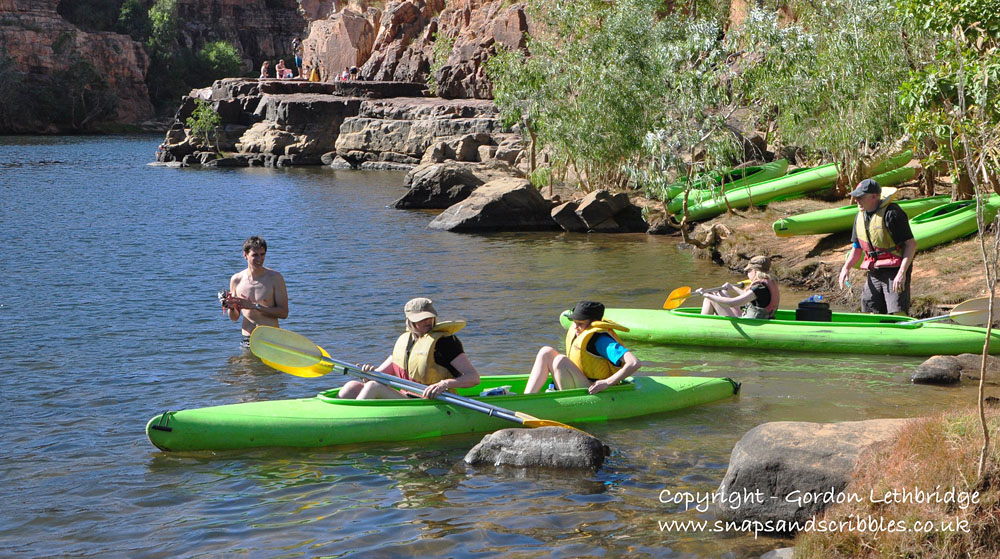
This section of the gorge is a lot narrower but no less dramatic. It is a little cooler as the sun does not reach inside the gorge quite so early and, as we discovered there can be a cooling breeze too. Another benefit of paddling in the upper sections is that it is less well travelled by tourists and canoeists alike.
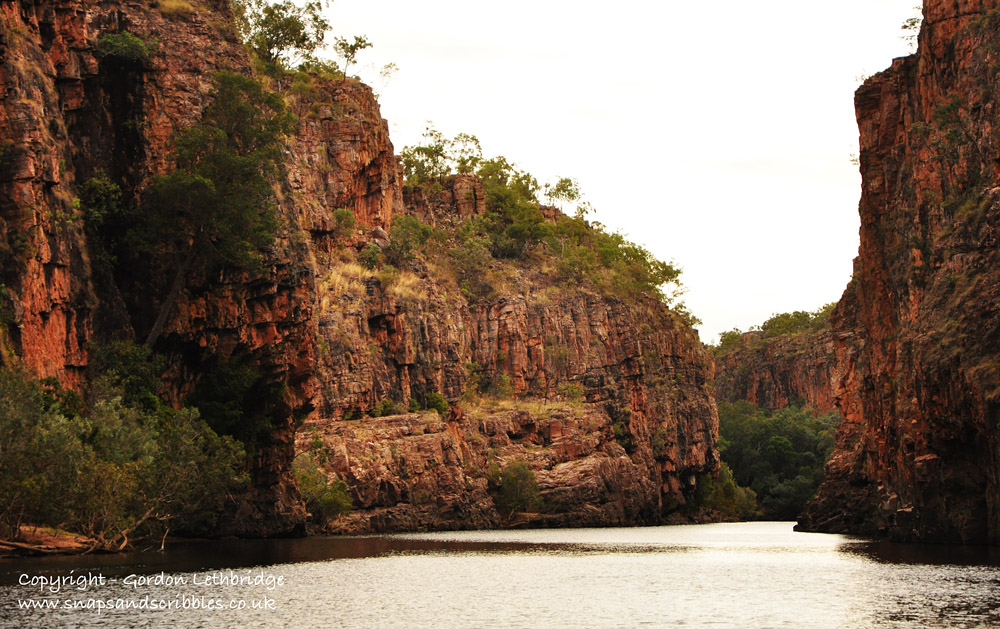
All too soon it was time to head back. Our appetite had been whetted and the prospect of a longer paddle beckon next time we head for the Northern Territory. Apparently there is a tour company that does heli-canoeing. In principle it is similar to heli-sking; you and your canoe are dropped off up the gorge by helicopter and you paddle out.
We didn’t encounter any crocodiles, not even the shy freshwater variety. My fears were unfounded despite all the sensational stories and worrying warnings. Instead it was a great day out with the chance to experience the dramatic beauty of the gorge as well as seeing birdlife up close and personal.
For more on what to do in Northern Territory visit www.australiasoutback.co.uk. For more on canoeing and other activities in and around Katherine Gorge and Nitmiluk National Parks visit Nitmiluk Tours.
I will be writing more about the Northern Territory in future posts. If you would like to know when these appear then sign up to be notified in the sidebar on this page or like the Travel Unpacked Facebook page
I travelled to Katherine Gorge and Nitmiluk National Park as a guest of Northern Territory and Nitmiluk Tours. However I maintain full editorial control at all times and write about my experiences as they happened, postive or negative.


